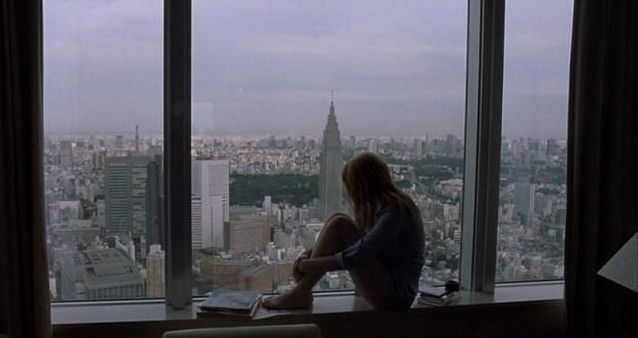Lost in Translation
Directed by Sofia Coppola
Written by Sofia Coppola
2003, USA
Ahead of this month’s screening of Sofia Coppola’s The Bling Ring at Cannes, I finally broke down and watched her sophomore directing effort, Lost in Translation. I loved seeing Bill Murray’s comeback via every Wes Anderson film but had always overlooked Coppola’s depiction of Murray as the washed up actor in Tokyo. Couched between The Royal Tenenbaums and The Life Aquatic with Steve Zissou, Lost in Translation presents Murray in a role much more akin to his own experiences as an actor.
Bill Murray plays Bob Harris, a jaded and ageing actor whose glory days are far behind him. He comes to Tokyo to shoot an ad for whiskey. It is clear that Harris attempts to avoid new experiences as a matter of habit, and he is only in Japan to earn $2 million. Given Harris sour demeanor and age, the young and beautiful Charlotte (Scarlett Johansson) has no reason to notice him, but she does, if only because both of them are bored, killing time in a Tokyo hotel. The two develop a purely platonic relationship, bonding over their shared struggle with loneliness and culture shock.
The friendship that transpires is wholly uneventful. The most obvious result of throwing two directionless tourists together – sex – does not seem to be an option. Their relationship is undeniably intense but ultimately platonic. In fact, introducing intimacy into the relationship would likely ruin it. So, Charlotte and Bob enjoy a brief period of talking, an even briefer period of laughing, but mostly, silence. Their experience of Tokyo has been marked by bored silence, and unsurprisingly, their relationship is predicated on sharing this silence. Their friendship grows from a basic need for companionship. Alone, the silence and boredom is unbearable, but as long as there is someone beside them, it becomes tolerable. All of this combined gives the impression that their friendship has the potential to be life-changing.
At its heart, the film explores how two strangers in an unfamiliar, unsettling environment can give each other hope. A recurring image throughout the film shows them window gazing. In fact, before they properly meet, Charlotte seemingly spends all of her days sitting in the window, gazing out onto the city below. These shots carry the film in their depiction of the characters’ sense of disorientation in Japan. Tokyo is a sprawling expanse, yet Charlotte is limited to her tiny window view and hotel room. Bob similarly gazes in confused awe at the city through taxi windows, unnerved by seeing himself on billboards. This recurring image ultimately serves to convey Bob and Charlotte’s sense of separateness. They see the world around them through a screen, a world they aren’t part of. They don’t belong in Tokyo. They don’t fit in.
Sofia Coppola’s Lost in Translation is a quiet commentary on displacement and loneliness. With characters unhappy in their marriages and unsure of their own desires for themselves, Coppola confronts them with a strange and disorienting city. The film is such a subtle rumination on companionship. Bob and Charlotte would normally never meet, but their presence in the madness that is Tokyo drives them to seek out a companion, someone to share in their disbelief of this new culture. They never truly learn anything of consequence about each other’s personalities and lives but give each other momentary comfort when they are lost.
– Katherine Springer








